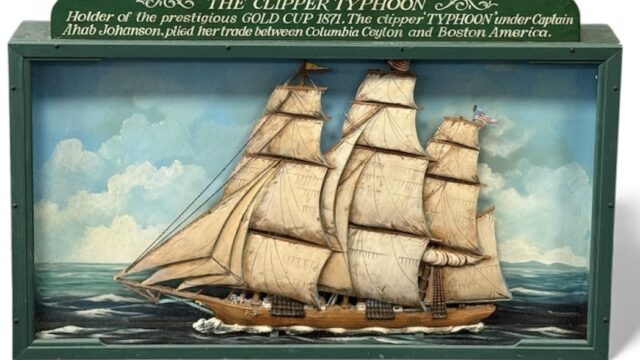Eight desirable watch brands
We're looking at eight watch brands which are featuring in our auction on 20th September
Patek Philippe
In 1839 Antoine Norbert de Patek (1812-77) founded Patek, Czapek & Cie with François Czapek in Geneva. Six years later their partnership was terminated and Patek went into business with watchmaker Jean Adrien Philippe (1815-94), changing the company name Patek, Philippe & Cie in 1851.
Philippe had previously received a bronze medal for his keyless winding and hand-setting system at the Industrial Exposition in Paris in 1844, and a year later had his design patented. Since 1932, the company has been owned and operated by the Stern family. Of the ten most expensive watches ever sold at auction, nine were Patek Phillippe.


Omega
In 1848 the then 23 year old watchmaker Louis Brandt opened his workshop in the small Swiss village of La Chaux-de-Fonds, starting the company that became Omega. Upon his death in 1879, the business was taken over by his two sons Louis-Paul and César, who six years later launched their first series-produced calibre - the ‘Labrador’. In 1894 the 19-ligne calibre was released, setting a new standard in watchmaking, with its combination of winding and time-setting via the stem and crown still widely used today. They crowned their new achievement 'Omega', and with the movement’s success changed the name of the company to Omega Watch Co.
By 1903 OMEGA became the largest manufacturer of finished watches in Switzerland. Due to its reputation for accuracy, Omega took on the role of official timekeeper at many sporting events, including in 1932, where they became the first watchmaker to take on timing duties for an entire Olympic Games.
Since 1995’s GoldenEye starring Piers Brosnan, James Bond has been seen wearing an OMEGA Seamaster in all his big screen outings.

Rolex
Rolex was founded in London, 1905 by Hans Wilsdorf (1881-1960). Concentrating on creating wristwatches with accurate timekeeping, in 1910 a Rolex watch was the first wristwatch in the world to receive the Swiss Certificate of Chronometric Precision. Rolex moved to Geneva in 1919 and in 1926 created the first waterproof and dustproof wristwatch - ‘Oyster’. To prove that the Rolex Oyster was waterproof English swimmer Mercedes Gleitze swam the English Channel, a swim which lasted over 10 hours, wearing the watch. It remained in perfect working order.
In 1931 Rolex patented the first ever self-winding mechanism with a Perpetual rotor, which today is in every modern automatic watch.


Cartier
The jewellery and watchmaking brand Cartier was established when Louis-François Carter (1819-1904) took over the workshop of his master Adolphe Picard in 1847. The brand was launched into high society when Princess Mathilde, the cousin of Emperor Napoleon III, bought a piece of Cartier jewellery for the first time. Joined by his grandson Louis Cartier in 1898, the Cartier boutique was established in Paris. In 1904 Louis Cartier designed one of the first men’s wristwatches, the ‘Santos’, for Brazilian aviator Alberto Santos-Dumont.

Dent
Dent & Co. was established in 1814 by Edward J. Dent (1876-1957), creating precision chronometers for the Royal Navy. Dent manufactured the Standard Clock at the Royal Observatory, which kept ‘Greenwich Mean Time’, and continued to do so until being replaced by an electronic clock in 1946. In 1841 Dent earned the Royal Warrant as watch and clockmaker to Queen Victoria and Prince Albert, a title the company would hold through to the reign of George V.
In 1852 Sir George Airy awarded Dent the contract to build a great clock at the Houses of Parliament, now known as Big Ben.

Longines
August Agassiz (1809-1877) created a watchmaking workshop with fellow watchmakers in the Swiss village of Saint-Imer in 1832. His nephew, Ernest Francillon took over operations of the workshop in 1852 and 15 years later opened a factory built on a field known locally as ‘Es Longines’. The name was kept, and the Longines brand was formed.
Longines remains the oldest watch brand trademarked in the International Registry at WIPO. It has significantly contributed to the evolution of sports timekeeping, developing devices that accurately indicate as little as a millionth of a second. Longines pioneered the first system of electromechanical timing for start and finish lines, where an athlete breaking through a wire would start or stop a timer.

Tissot
Founded in La Locle, Switzerland in 1853 by Charles-Félicien Tissot (1804-73) and his son Charles-Émile (1830-1910), the company made a name for themselves selling their pocket watches across the Russian Empire, receiving requests for the time pieces from the Russian Court of Tsar Nicolas II. In the 1920s Tissot created the world’s first non-magnetic wristwatch, to solve the problem of the increased use of electricity in daily life magnetising watches and affecting their timekeeping.
In the 1930s Tissot partnered with Omega to form the SSIH Group, which eventually became the Swatch Group. They continue to innovate, producing one of the first touchscreen watches ‘T-Touch’ in the 1970s.

Seiko
In 1881 Kintaro Hattori (1860-1934) opened a shop selling and repairing watches and clocks in Tokyo. Eleven years later he established the Seikosha factory, ‘seiko’ meaning ‘exquisite’ in Japanese. In 1895 he created the company’s first pocket watch the ‘Timekeeper’, and in 1913 made the ‘Laurel’, the first wristwatch produced in Japan.
On Christmas day 1969, Seiko launched the world’s first quartz wristwatch, the Seiko Quartz Astron 35SQ, which is on permanent display at the Smithsonian Institution.
Seiko automatic stainless steel automatic calendar ‘Turtle’ diver wristwatch
Lot 128
£100 - £200

View all the lots in our latest Prestige Watches, Jewellery & Collectables View




